

In our work with changemakers, teams, and organisations, we kept encountering the same challenge: How do you talk about the things that matter most—like trust, resilience, purpose, or collaboration—in a way that's both meaningful and measurable?
We knew from experience that certain projects felt different. They had a special energy, a sense of aliveness that made them memorable. Which led to the question: what were the underlying qualities the individuals and teams possessed which contributed to this aliveness? And could we find the language to articulate those qualities in a useful way?
These questions led us on a multi-year journey of research, practice, and iteration, culminating in the Capacity Compass.
The Capacity Compass is built on a simple yet powerful idea: thriving individuals, teams, and systems are built upon a set of foundational human capacities. These aren't static traits or fixed skills, but dynamic qualities—ways of being, relating, sensing, and acting—that evolve over time and can be cultivated through intentional practice.
The framework draws on foundational work in systems thinking, complexity science, psychology, and insights from contemplative and indigenous knowledge traditions. In particular, the model is structured around four dimensions inspired by Ken Wilber’s AQAL model (short for “All Quadrants, All Levels”), which is part of Integral Theory:
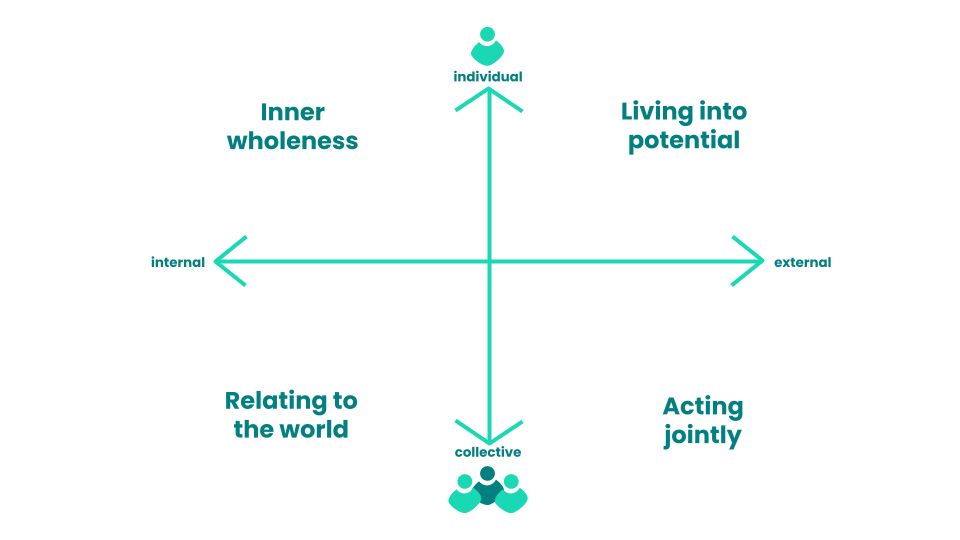
This architecture ensures we capture both the inner and outer dimensions of development, at both individual and collective levels.
The Capacity Compass then identifies 28 core capacities across two interconnected levels:
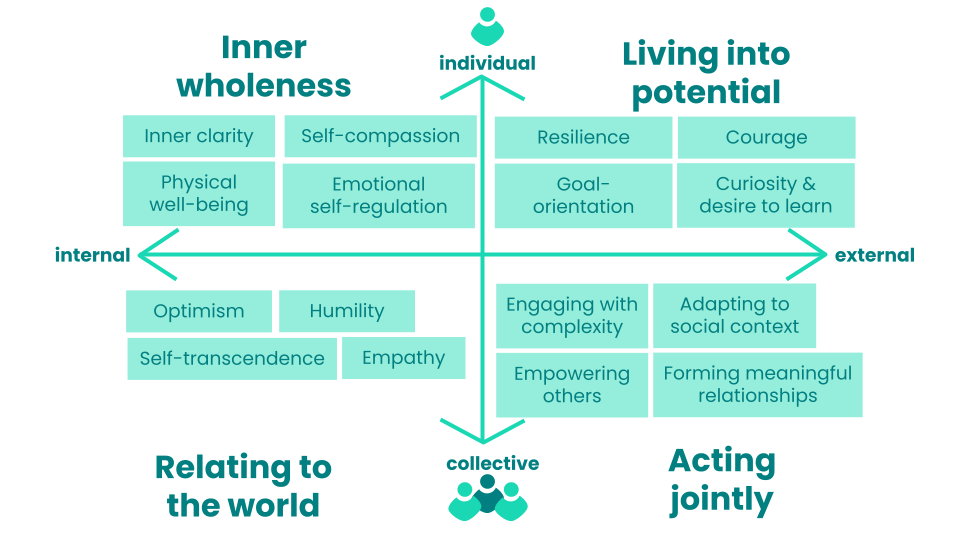
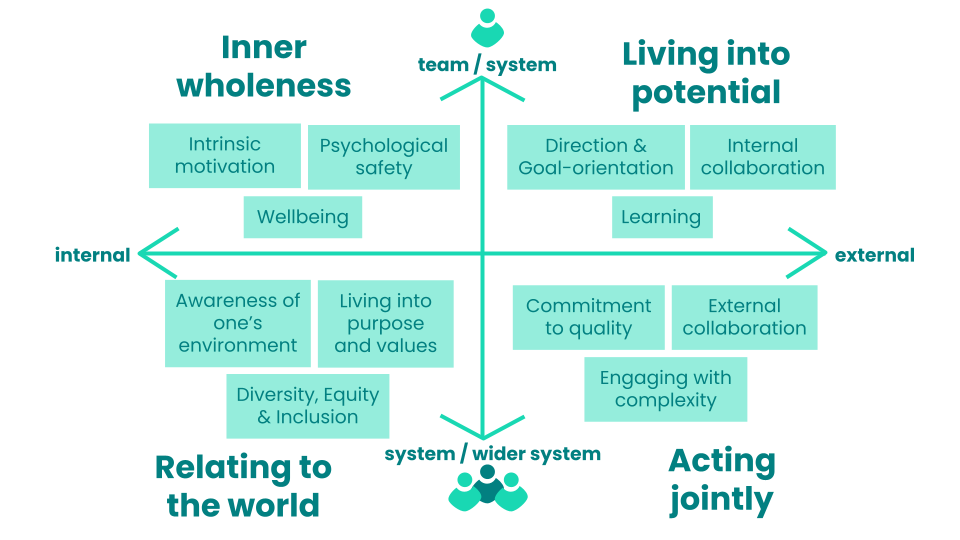
To further understand the architecture of the Capacity Compass, we must clarify its foundational concept: capacity.
Capacity is the inherent or developed ability of an individual or group to perform, adapt, and grow within various contexts. Unlike potential, which is latent, capacity refers to abilities that are already present or are being actively cultivated. Capacity development is therefore the process of transforming innate potential into applied abilities. This process follows a clear pathway:
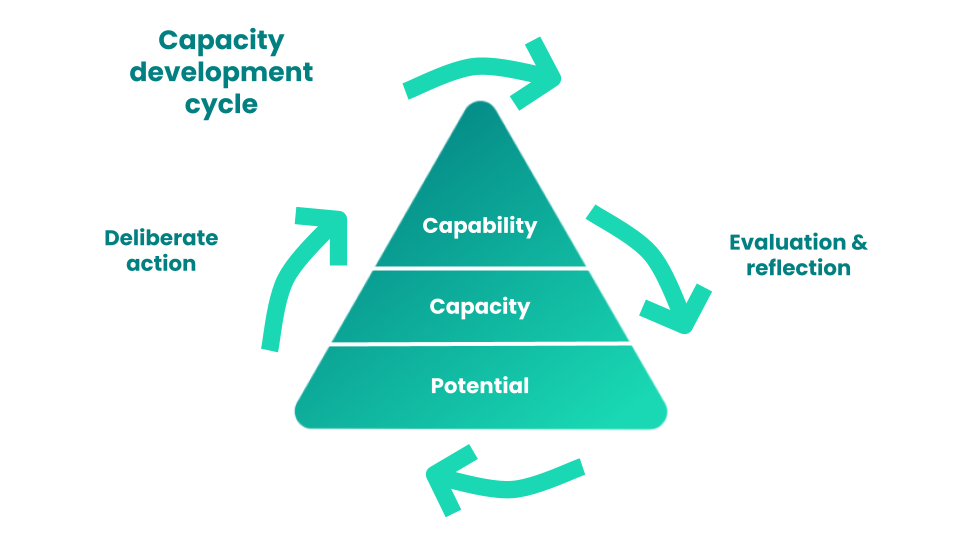
To further clarify these distinctions, the following table outlines the key terms we use in our work:
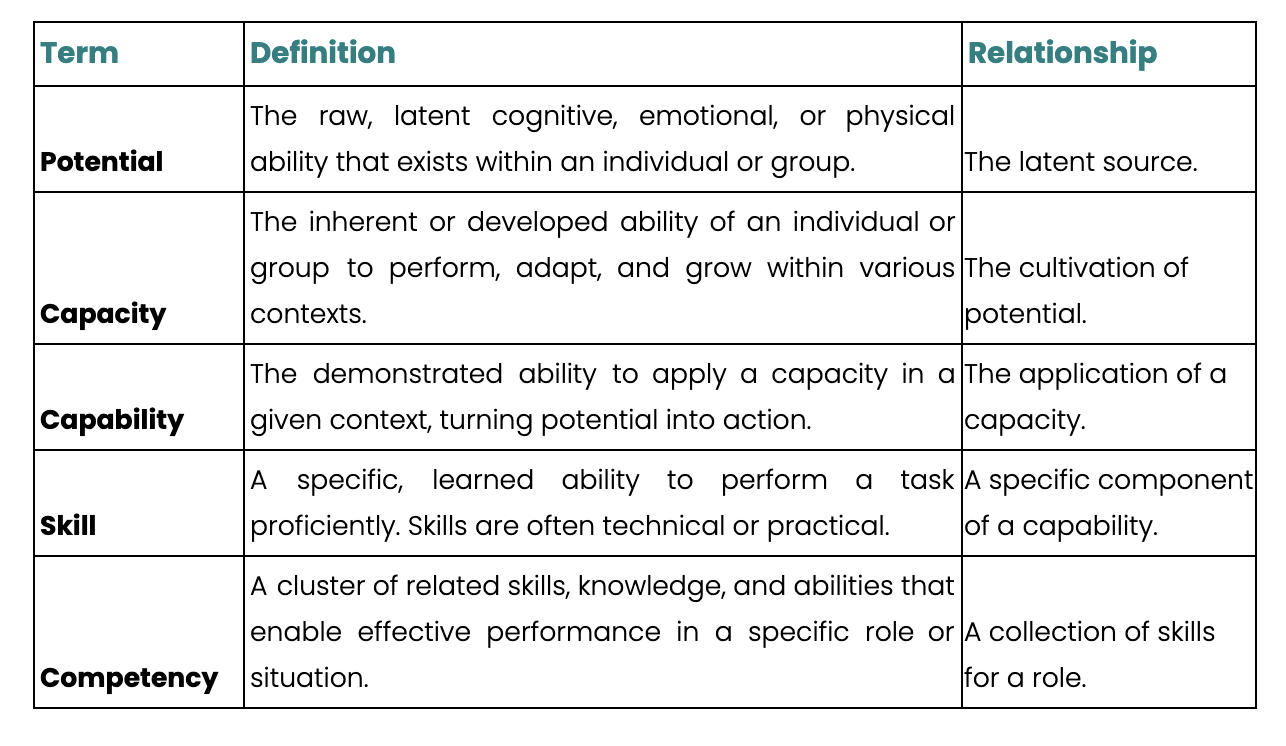
Teams and organisations often face real struggles in their development journey: How do we talk about what we need to grow? How do we know if we're making progress? What capacities do we actually need to build?
Meanwhile, the fields of psychology, leadership, and systems change hold rich wisdom that could help—but they often speak in highly specialised languages, making them difficult to access and apply.
The Capacity Compass bridges this divide. It translates theoretical knowledge into practical, accessible language that teams can actually use. Think of it as the legend for the map of your internal landscape. Just as a map legend allows diverse travelers to understand the terrain, the Compass gives teams a common vocabulary to describe the essential human and relational capacities needed for regenerative impact—connecting everyday practice with validated knowledge.
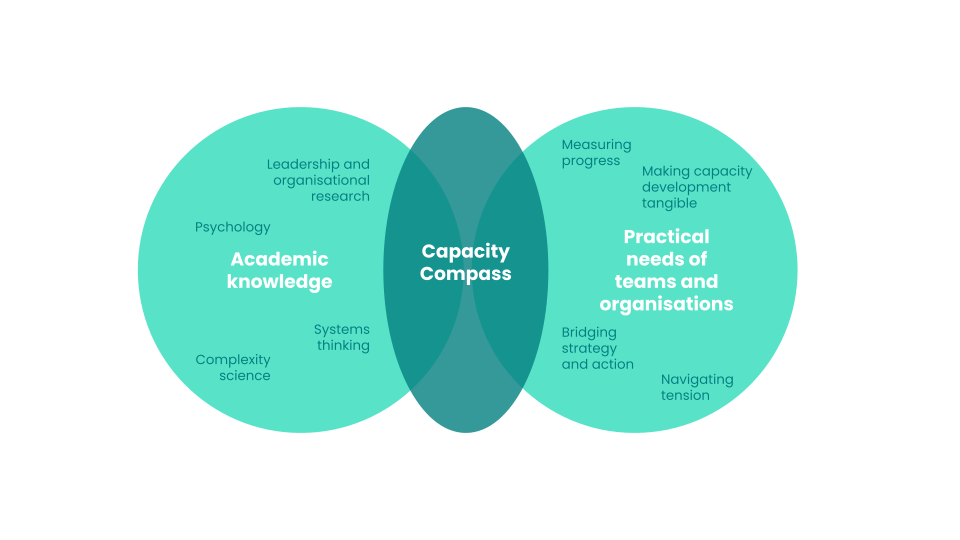
Since developing the Compass, we've used it across diverse contexts with remarkable results. We draw from a comprehensive concept note with detailed definitions of all 28 capacities, an item library with questions from around 50 academically validated assessments, and customisable surveys for both individual and collective capacity measurement.
The following case examples illustrate how we've implemented the Compass to measure and build capacity in a variety of settings.
Working with 20 young adults navigating career transitions, we designed a 5-week program focusing on seven key capacities from the Compass. The results were significant: participants reported increases in courage, optimism, and inner clarity. As one participant shared: "I am more aware of what I am capable of."
The Compass helped us move beyond a generic "soft skills training" to precisely target the capacities these young professionals needed most, and to systematically measure their development. Read more here.
The Kofi Annan Foundation wanted to evaluate how their year-long leadership program cultivated the values of ethical leadership that defined Kofi Annan's legacy. The challenge? How do you measure concepts like "humility" or "ability to bring people together"?
We used the Capacity Compass as a translation layer, mapping their four core values to specific, observable capacities within our framework, along with academically validated assessments from our indicator database.
This operationalised their values, providing a credible foundation for evaluation that combined surveys, observations, and individual coaching calls—turning the evaluation itself into a developmental experience. Read more here.
Our 6-week program for professionals seeking to reconnect with their sense of purpose demonstrated the profound link between inner clarity and outer action. Over 40 participants showed significant increases in inner clarity and self-compassion, which then translated into concrete decisions: changing careers, pursuing further education, and initiating difficult but necessary conversations.
The data revealed what we had sensed but couldn't quite prove: that cultivating inner capacities doesn't just feel good, it enables people to act with greater courage, resilience, and effectiveness in the world. Read more here.
Through our work, we've seen the Capacity Compass unlock solutions to common challenges such as:
Making capacity development tangible. Instead of vague goals like "build leadership capacity," teams can now specify exactly which capacities they aim to strengthen, and track their progress.
Navigating tension and fostering alignment. When conflicts arise, the framework allows teams to shift from "whose idea is right?" to "which collective capacities do we need to strengthen to navigate this challenge together?"
Measuring what truly matters. For evaluators, the Compass provides a robust framework to capture the deeper, human-centered shifts that conventional metrics often miss, while maintaining methodological rigor.
Supporting meaningful training and program design. By focusing on foundational capacities rather than surface-level behaviors, the work creates lasting shifts rather than temporary fixes.
The Capacity Compass is published under a Creative Commons Attribution-ShareAlike 4.0 International License (CC BY-SA 4.0). This means that anyone is free to use, adapt, build upon, and even apply the model in commercial contexts—as long as Unity Effect is credited as the original source, and any derivative works are shared under the same license.
Now that you know what the Capacity Compass can do, we invite you to engage with it further: